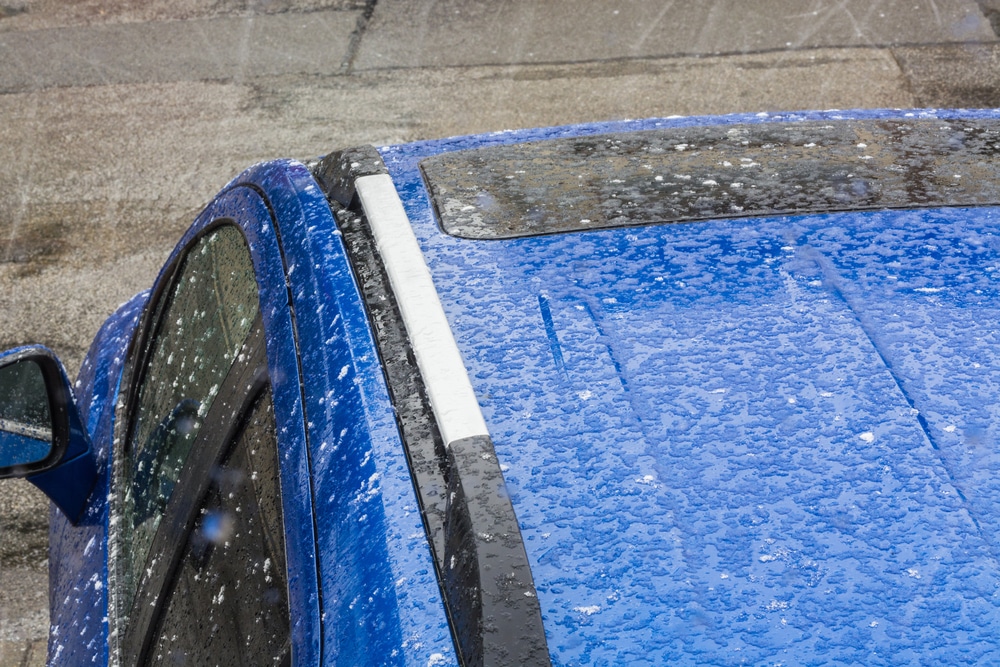How to Find Hail Damage on Your Car

When you live in an area known for inclement weather, like Indiana, dealing with car damage is an unfortunate consequence. While there are certainly many great things about living in the Midwest, the bad weather—such as tornadoes, thunderstorms, and hail—is not one of them.
Luckily, many car repair shops in the Midwest understand the woes of dealing with weather-related car damage, and as such, they utilize special repair methods to better handle these situations. Paintless dent repair, for example, is a more efficient way to handle hail damage. And there are some great Indiana car repair shops that specialize in PDR for hail damage.
The Dangers of Hail Damage
Though hail is often the least of anyone’s worries when it comes to bad weather, hailstones can do significant damage to a car. Some hailstones can indeed be as small as the size of a pea, which means they likely won’t do much damage. But hailstones can also reach the size of a golf ball or even a baseball, and when traveling several miles per hour, a hailstone that large can do major damage, especially to a car.
From 2000 to 2019, the average losses from hail damage were between $8 to $14 billion a year. And while a lot of those costs were covered by auto insurance policies, many were not. And even those who have car insurance still sometimes have to pay high deductibles before their coverage kicks in.
This is why it’s important to spot signs of hail damage so you can take preventive measures to prevent further damage in the future. Hail storms can happen so quickly that some people don’t even notice them, and by the time they go outside to their car, all they see is the damage, but not the culprit. This is because if the sun is out, the hailstones can melt before you even spot them.
How to Spot Hail Damage on Your Vehicle
If your car sits outside, it is inherently at risk of sustaining damage for various reasons. Your vehicle could become damaged by other cars driving in the neighborhood, kids playing with toys and sports equipment, falling branches and debris, and, of course, bad weather such as hail.
The key to knowing how the damage was sustained is learning how to identify the kind of damage hailstones can specifically cause, which includes:
Dents and Dings
Though the metal body of a car is strong and can resist some minor impacts, even small hailstones traveling at high speeds can result in lots of tiny dents and dings. Generally, hailstone damage will create small to midsize round dents or dings, but larger stones can also create bigger crevices and indentations. This damage will often be found on the hood, trunk, and top of the car.
Broken Mirrors and Headlights
Crooked and cracked mirrors are also a sign that your car was hit by hail. Depending on the direction the wind is blowing, hail can hit your car from the side, causing your mirrors to move or become cracked. This also means your headlights and taillights are also susceptible.
Cracked Windshield and Windows
Because the windshield is a widely exposed part of the vehicle that faces the sky, it is also at risk of being damaged by hail. So if you notice any circular cracks similar to what might happen if a rock were to hit your windshield, it may be a sign of hail damage. However, circular cracks are not the only sign. Glass is unpredictable and can crack or break in many ways, so even a linear crack could be a sign that your vehicle was impacted by hail.
Paint Damage
In some cases, hail can even scrape against your vehicle’s exterior, causing the paint to scratch or crack. Some larger dents that stretch the metal can also cause the paint to crack, especially if left unrepaired over time.
Preventing Hail Damage
While most hail damage can easily be repaired with PDR techniques, the best way to keep your car in good shape is to take steps to prevent hail damage in the first place. This can include:
- Parking in a garage
- Parking under a covered area
- Using a padded car cover or even blankets if that’s what you have on hand
- Paying attention to weather reports and moving your car temporarily to a safer location
Hail Damage Repairs
Even with preventative measures, there is no guarantee that your car won’t still sustain some damage. In which case, you should make sure you get it in for repairs as soon as possible. Even small dents and dings can grow over time or become more permanent, which can result in costlier repairs.
When it does come time to take your car in, you should also be mindful of which shop you choose. Not all car repair shops specialize in paintless dent repair and may prefer to use conventional methods because it means they will get paid more money or because their technicians simply don’t have experience in PDR.
While conventional dent repair might be the only option for more severe and extensive hail damage, a good shop will always prioritize using PDR whenever possible to protect the car’s resale value and save the customer and the shop itself time and money.
Killa Dent Removal
At Killa Dent Removal, we specialize in paintless dent removal and will always opt for this method of repair whenever possible to deliver the best results and get you back on the road in no time. Our PDR specialists provide fast and efficient high-quality repairs with a 100% Satisfaction Guarantee. For a FREE estimate, contact us today!
(317) 480-9433
Or Stop By:
Killa Dent Removal
7807 W Morris St, Indianapolis, IN 46231



